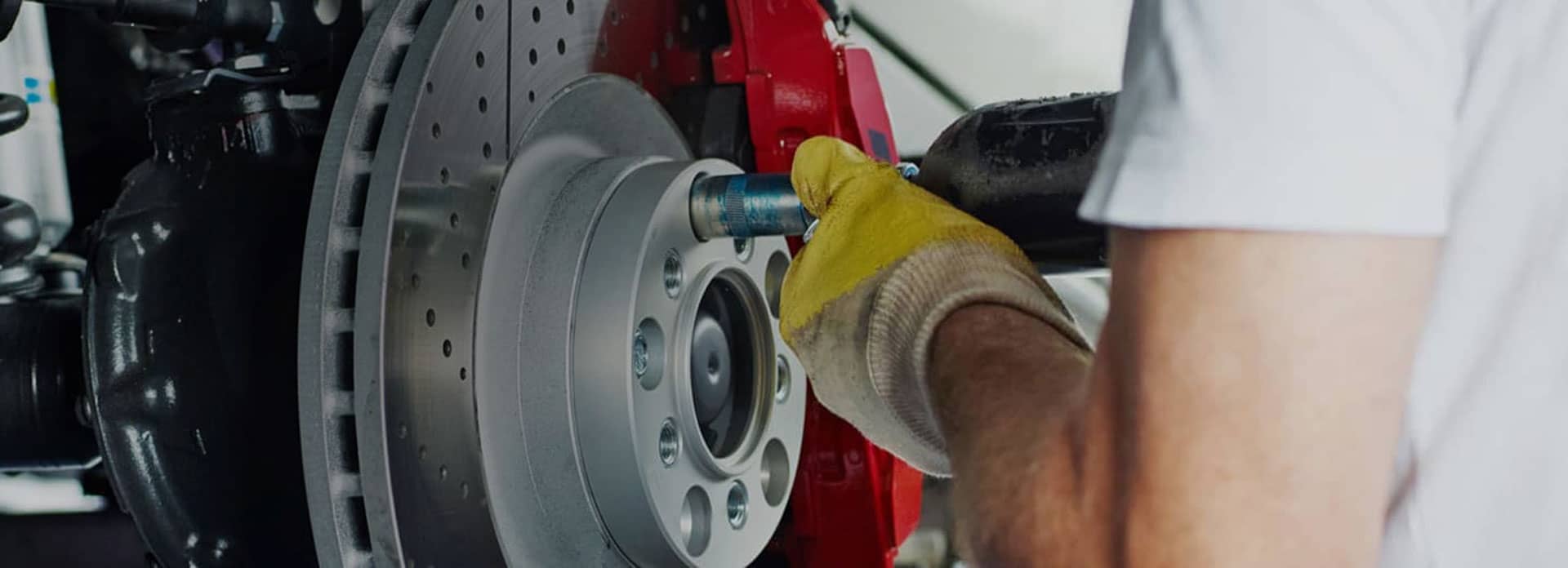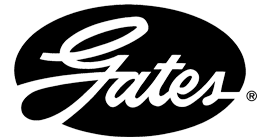
AUTONET TV
Archive for November 2020A Sticky Brake Situation (Parking Brake Service and Maintenance)Posted November 29, 2020 7:03 AMWe've all been there. You park your vehicle on a steeper than usual hill and worry about it rolling down while you're running your errands. So you decide you'll use the parking brake. When you get back, you release the parking brake, hit the ignition, put it in gear and—uh, oh—you can feel the parking brake is still on. It's stuck. What do you do now? Welcome to the world of infrequently-used parking brakes. Yes, they do stick for several reasons. It's common for components to corrode and get locked up. Sometimes if you have applied it extra hard, it can jam. Could be a rusty cable, could be a spring that doesn't return the brake to its disengaged position. Some pieces just break when they're stressed for the first time in a while. A caliper or the pivot arm it's on can also stick. There are a few things you can try to unstick it. Carefully rock your vehicle by putting it first in drive and then reverse. You have to be careful doing that, though, because sometimes you can damage the transmission. You can try working the parking brake control a few times to see if that will loosen the corrosion. If you can't unstick it, you can try driving slowly a short distance to a repair facility near you. Sometimes it won't cause damage to the brakes but it depends on how tightly the parking brake was applied and what was stuck. You may also have to have your vehicle towed to a repair facility. In any case, once you've seen these symptoms, have your vehicle brakes looked at by a professional who can fix the root of the problem. Better yet, don't let your vehicle get in this condition; regular maintenance and inspections by a trained technician should prevent you from getting in a jam somewhere thanks to a stuck parking brake. You could use a "brake" like that. TJ's Auto Center Inc. If You Drive Like a Maniac (Aggressive Driving is Bad for a Vehicle)Posted November 22, 2020 8:00 AMWhen someone mentions driving like a maniac, they're not talking about you, surely? Besides the safety issues of aggressive driving, you should know that your vehicle will last a lot longer if you'll just mellow out a little. Here are four traits good drivers follow if they want their vehicles to go the extra distance. Cool—The driver who can't wait to get to the next stoplight is just shortening the life of his or her vehicle. Jackrabbit starts and uneven acceleration hurts your engine because the valves and cylinder heads are stressed more. All of those moving parts will wear out faster as well as other components that are connected. That means things like the air conditioner, power steering pump… just about anything that attaches by a belt or a pulley. Oh, and you'll be generating more heat. Heat is one of a vehicle's worst enemies. Warm—If you get in your cold vehicle which has been sitting overnight, start it up and rev the engine high, you've just put a lot of stress on your engine. That's because you didn't let the oil (that's been sitting down in the oil pan at the bottom of the engine) get to the moving parts in order to lubricate them. Some manufacturers advise that you run your vehicle for about 30 seconds before you take off. And if it's really cold out, you may be wise to let the engine run for a minute or two before putting a load on the engine. Also, for the first 5-15 minutes, keep your RPMs on the low side and don't jam on the accelerator. Smooth—You're trying to get somewhere in a hurry and have to jam on the brakes while traveling pretty fast. Just that one time can do more damage to the brakes than you would think. Lots of hard braking can overheat your brakes and damage your rotors, wearing them out way faster than someone who drives with a smoother touch. Hard braking also strains suspension parts, tires and engine mounts. Smart—You know what PRNDL stand for. Those are the letters in your automatic transmission (Park, Reverse, Neutral, Drive, Low). Here are another couple of letters: IQ. A smart shifter never goes into R to D without completely stopping the vehicle, unless, of course, you're anxious to spend some big dollars on your automatic transmission. These days, it's common to get 200,000 miles/320,000 kilometers out of a vehicle, no problem. It just takes regular maintenance (oil changes and regular service) and one other thing. Showing off: showing off a little moderation in driving habits with a big payoff in the end.
Don't be Fuelish (Signs Fuel Pump is Failing)Posted November 15, 2020 12:51 PMA driver of a large SUV loaded with equipment was heading on a 7-hour work trip when he stopped at a gas station to refuel. When he went to restart his SUV, it turned over but wouldn't catch. Try as he might, he was never able to get it started again. Of course there are many things that can cause those symptoms, but the next day he had his SUV towed to a service repair facility. Using their test equipment, they were able to pinpoint the problem. His fuel pump had failed. The pump, which was located in the fuel tank, had to be replaced, and after awhile he was back on the road, delayed, but happy to be up and running again. What had happened is that the pump was not strong enough to deliver adequate fuel to his engine, vital to being able to start it. It had delivered just enough pressure in the morning to get it started the first time, but it was on its last legs. He had been having trouble starting his SUV in the days leading up to this trip, a clue that something was wrong. The engine relies on a certain pressure of fuel from the pump to run properly, and there are some other signs to be aware of that your fuel pump may need to be replaced. If you are putting strain on your engine, such as going uphill or hauling a big load, and the engine sputters, it may be a sign that the pump isn't delivering that consistent pressure. Another warning sign is if your engine is running hot and then stalls. That could mean your fuel pump is getting weak. Sometimes you might notice your vehicle suddenly speeds up on its own or your fuel economy goes from good to poor in a short time. If your fuel gauge shows you have plenty of fuel in the tank and your engine stalls, that's another possible sign of a failing fuel pump. Technicians have special equipment to see where the fuel problems are, and there are many possibilities. Have your vehicle checked before you're left stranded. Oh, and one more tip to prolong the life of your fuel pump. Since it is cooled and lubricated by the fuel in your tank, make sure you keep at least a quarter of a tank of fuel at all times. Avoid your "low fuel" light going on and you may be helping yourself avoid having to replace your fuel pump. TJ's Auto Center Inc. In a Fog (Fogged Windows in Cold Weather)Posted November 8, 2020 12:57 PMIt's bad enough in cold weather when ice and snow block your visibility. Add to that fog on the inside of your windows and you could be driving blind. So here are a few tips on how to keep your windows from fogging up when there's a chill in the air. You probably know fog is really condensation, when moist, warm air meets a cold surface and turns to liquid. If your windshield fogs up, you probably turn on your windshield defroster. Most defrosters blow heated air on the windshield glass to warm it up so it won't condense the moisture. Many also turn on the air conditioning to reduce the moisture. That same strategy can work on the rest of the windows. First, turn up your heater's temperature setting. The hotter the air, the more moisture it will hold. Also, turn off the "recirculating" setting since you want all outside air to come in. Then switch on the air conditioning. It will remove the moisture from the outside air that it's blowing inside the cabin. Try cracking a couple of windows to make it easier for the air to flow. This should do the trick pretty quickly. There's one other thing to try. Many vehicles have electric heater elements embedded in the rear window glass (the rear window defroster) and in the outside rearview mirror glass. Make sure to turn those on, too; sometimes they're on the same switch. For all of these things to work, of course, your vehicle's components have to be maintained so they'll do the things they're designed to do. And you didn't think it was important to have your air conditioning working in the cold weather months! One final tip. Keep the insides of your windows CLEAN. Oil and dirt on the glass give the water molecules something to latch on to. That ought to clear up this problem. TJ's Auto Center Inc. The Best Book that's Not a Best-SellerPosted November 1, 2020 7:22 AMSometimes the movie is better than the book, sometimes it's the other way around. But when it comes to your vehicle, the best book of all is the owner's manual. The plot is simple: Owner wants long life and dependable performance from the vehicle, manual has the way to achieve that long life and dependable performance. And yet, it's amazing that some people will own a vehicle for years and never even crack this book. They'll only read it when they absolutely have to, for things like finding out how to change the clock. Ok, so you're probably not going to rush right over to your glove box and start reading the owner's manual cover to cover. We know that. But just think of what you can get out of it. Consider this. Those who wrote or helped write this book include the engineers who designed it and the people who tested and refined it. They know more about your vehicle than anyone, period. They know how long a part is likely to last and what you need to do to take care of it. They know how far a distance or how long a time you can drive before you have to change certain fluids in it. They know what temperature it can reach before things will start to break. And they've put your vehicle model through torture, testing it in the absolute worst conditions to see how to make it stand up to more abuse than it will ever receive. They've then torn it down, examined it and, in many cases, redesigned the parts to make them even better. And they've put down—in fairly minute detail—this blueprint that, if you and our experts at TJ's Auto Center Inc. follow their suggestions, will make it very likely that your vehicle will serve you well for a long time. If you don't follow those suggestions, all bets are off. We didn't even mention that the owner's manual tells you how to operate everything in your car. How to adjust the heat and air conditioning, how to pair your smartphone with the audio system, how to program your key fob so it won't sound the horn when you lock your vehicle. Have you lost your manual or did you buy a vehicle that didn't come with one? Many are available either online or in paper form. If you don't know where to begin with such a long book, try a couple of pages a week, just three minutes. You’ll discover your vehicle does things you never even knew it could do. And the movie will never be as good.
| ||
SearchArchiveJune 2010 (71)July 2010 (4) August 2010 (4) September 2010 (4) October 2010 (4) November 2010 (4) December 2010 (4) January 2011 (4) February 2011 (4) March 2011 (4) April 2011 (5) May 2011 (5) June 2011 (4) July 2011 (4) August 2011 (5) September 2011 (4) October 2011 (4) November 2011 (5) December 2011 (4) January 2012 (5) February 2012 (2) March 2012 (5) April 2012 (4) May 2012 (5) June 2012 (4) July 2012 (5) August 2012 (4) September 2012 (4) November 2012 (1) December 2012 (2) March 2013 (1) April 2013 (3) May 2013 (2) October 2013 (5) November 2013 (2) January 2014 (2) February 2014 (3) March 2014 (1) July 2014 (4) August 2014 (7) September 2014 (4) October 2014 (5) November 2014 (4) December 2014 (5) January 2015 (4) February 2015 (4) March 2015 (4) April 2015 (4) May 2015 (3) June 2015 (5) July 2015 (2) September 2015 (2) October 2015 (4) November 2015 (5) December 2015 (2) February 2016 (2) March 2016 (4) April 2016 (4) May 2016 (5) June 2016 (4) July 2016 (5) August 2016 (4) September 2016 (4) October 2016 (5) November 2016 (4) December 2016 (4) January 2017 (5) February 2017 (4) March 2017 (4) April 2017 (3) May 2017 (5) June 2017 (4) July 2017 (5) August 2017 (4) September 2017 (2) October 2017 (5) November 2017 (4) December 2017 (3) January 2018 (5) February 2018 (4) March 2018 (4) April 2018 (4) May 2018 (4) June 2018 (4) July 2018 (5) August 2018 (4) September 2018 (5) October 2018 (3) March 2019 (4) May 2019 (2) June 2019 (5) July 2019 (2) August 2019 (1) September 2019 (4) October 2019 (5) November 2019 (4) December 2019 (5) January 2020 (5) February 2020 (4) March 2020 (5) April 2020 (1) May 2020 (2) July 2020 (1) August 2020 (5) September 2020 (4) October 2020 (4) November 2020 (5) December 2020 (4) January 2021 (6) February 2021 (4) March 2021 (4) April 2021 (4) May 2021 (5) June 2021 (4) July 2021 (4) August 2021 (5) September 2021 (3) October 2021 (5) November 2021 (4) December 2021 (4) January 2022 (6) February 2022 (4) March 2022 (4) April 2022 (4) May 2022 (5) June 2022 (4) July 2022 (5) September 2022 (4) October 2022 (5) November 2022 (4) December 2022 (4) January 2023 (5) February 2023 (4) March 2023 (4) April 2023 (5) May 2023 (4) June 2023 (4) July 2023 (5) August 2023 (4) September 2023 (3) October 2023 (2) January 2024 (1) February 2024 (4) April 2024 (1) May 2024 (3) June 2024 (5) July 2024 (4) August 2024 (4) September 2024 (5) October 2024 (4) November 2024 (4) December 2024 (4) | CategoriesWinter Prep (6)Tire Pressure Monitoring System (1)Shocks and Struts (4)Engine Air Filter (4)Warranty (1)Headlamps (6)Alignment (9)Check Engine Light (5)Maintenance (19)Parts (1)Differential Service (3)Cabin Air Filter (3)Steering (12)Fluids (8)Cooling System (10)Tires and Wheels (6)Tire Rotation and Balancing (4)Drive Train (5)Exhaust (11)Older Vehicles (2)Automotive News (4)Wheel Bearings (2)Fuel System (10)Service Intervals (3)Service Standards (5)Air Conditioning (10)Inspection (5)Battery (13)Brakes (17)Keys to a long lasting vehicle (2)Timing Belt (5)Fuel Economy (8)Transmission (5)Alternator (7)Auto Safety (5)Safety (2)What Customers Should Know (83)Fuel Saving Tip: Slow Down (2)Dashboard (1)Windshield Wipers (3)Oil Change (9)Customer Detective Work (1)Shocks & Struts (3)Safe Driving (1)Water Pump (2)Tires (12)Suspension (2)TPMS (3)Spark Plugs (2)Winter Tires (1)Fuel Pump (1)Brake Service (6)PCV Valve (1)Trip Inspection (2)Transfer Case Service (1)Fuel Filter (1) | |

OUR REVIEWS


Howard L.The business always does a great job and takes care of him. They are very polite.











